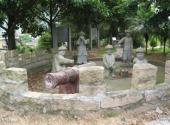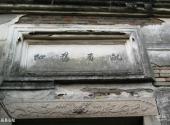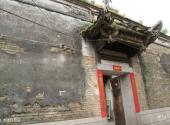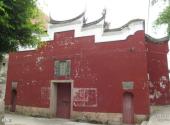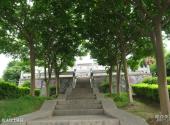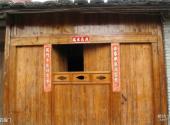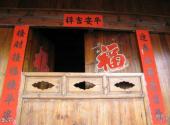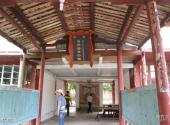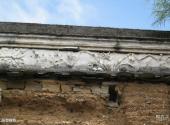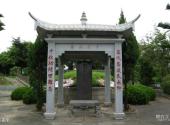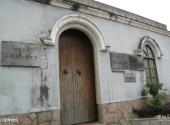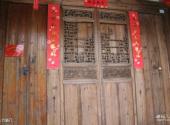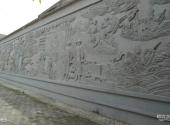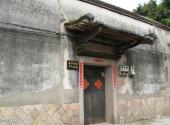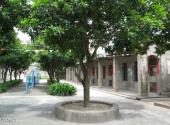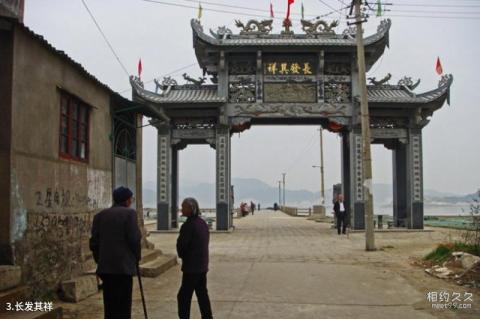
Scenic spot introduction:
Qinjiang is the only Manchu village in Fujian Province. It is located on the south bank of the Minjiang River, across the river from the Fuzhou Economic and Technological Development Zone. It is 4 kilometers away from Changle city and 15 kilometers away from the mouth of Minjiang River. The Minjiang River flowing through this section is like an ancient harp, hence the name Qinjiang. It was an important port in ancient times that controlled Majiang and defended the provincial capital. In the sixth year of Emperor Yongzheng's reign in the Qing Dynasty (1728), Arsai, the general who suppressed Fujian, asked the court to mobilize 513 officers and soldiers from the Laosi Banner and their families to station in Qinjiang, encircle the land and build a city, and establish the "Fuzhou Sanjiangkou Division Banner Camp". One of the four major navy flag camps, it is 151 years older than the Fujian Navy in Mawei. The layout of the naval flag camp is similar to the Tai Chi Bagua, and is known as the "Banner Bagua City".Attractions distribution:
Qinjiang Manchu Village is the only intact Qing Dynasty military castle in my country. Of the four naval garrison units deployed by the Qing court, only the Sanjiangkou Naval Banner Camp in Qinjiang Village has been preserved. The main attractions include Eight Banners Square, Eight Banners Museum, Qinjiang Government Office, General's Palace, Eight Banners Military Park, Bannermen Street, Dingxinmen, Stele Pavilion, Xiaoyoufang, Xu Jianting's former residence, Yulin Palace, Anti-French Martyrs Cemetery, Five Artillery God, etc. .Scenic spot qualifications:
National 2A level scenic spot, provincial level historical and cultural villageScenic spot features:
photography, culture, Manchu village, barracks, architecture, history, culture, Manchu, barracks, architecturetravelling guideline:
1. Qinjiang Manchu Village holds a public memorial event on the third day of July every year. Villagers spontaneously go to the riverside to release water lanterns, cut paper and burn incense to pay homage to the martyrs.
2. Every year on the Manchu Gold Awarding Festival on October 13th of the lunar calendar and the Yulin Palace Temple Fair in the third month of the lunar calendar, a type of opera called "Taige" is performed here. This type of opera originated in Northeast my country as a folk rap form of nomadic people. It was introduced to Fujian by the bannermen who were stationed with the Eight Banners in the Qing Dynasty. The actors in "Tai Ge" are usually selected and trained by children who are no more than 15 years old and weigh no more than 70 kilograms. The young actors stand on a small rotating stage that is carried by people or supported by a wheel cart and moves around. Performance, also known as "raising the pavilion".
Tour route:
Banner Street (Shuli Street) - Sanguantang - Dashidian - Xiaoyoufang - Jia's former residence - Stele Pavilion - Eight Banners Military Park - Yulin Palace - Five Artillery God - Eight Banners Museum - Anti-French Martyrs Cemetery
Best time to visit:
All seasons
Scenic spot location:
China>Fujian Province>Fuzhou City>Channgle District
How to get there:
Public transportation: In Fuzhou City, you can take a bus from Aofeng Passenger Terminal, Baihu Pavilion, or Nanyuan Park to Changle, and then change to bus No. 4 to Qinjiang Manchu Village.
Self-driving: Take the expressway from Baihuting in Fuzhou City, exit at Changleyingqian exit, turn left towards Changle City, go to the Changle City Roundabout and drive to the left for about 10 kilometers.
Scenic area map:
Click to expand the scenic area map
Manchu Village ticket price:
10 yuan
Scenic area opening hours:
Open all day

